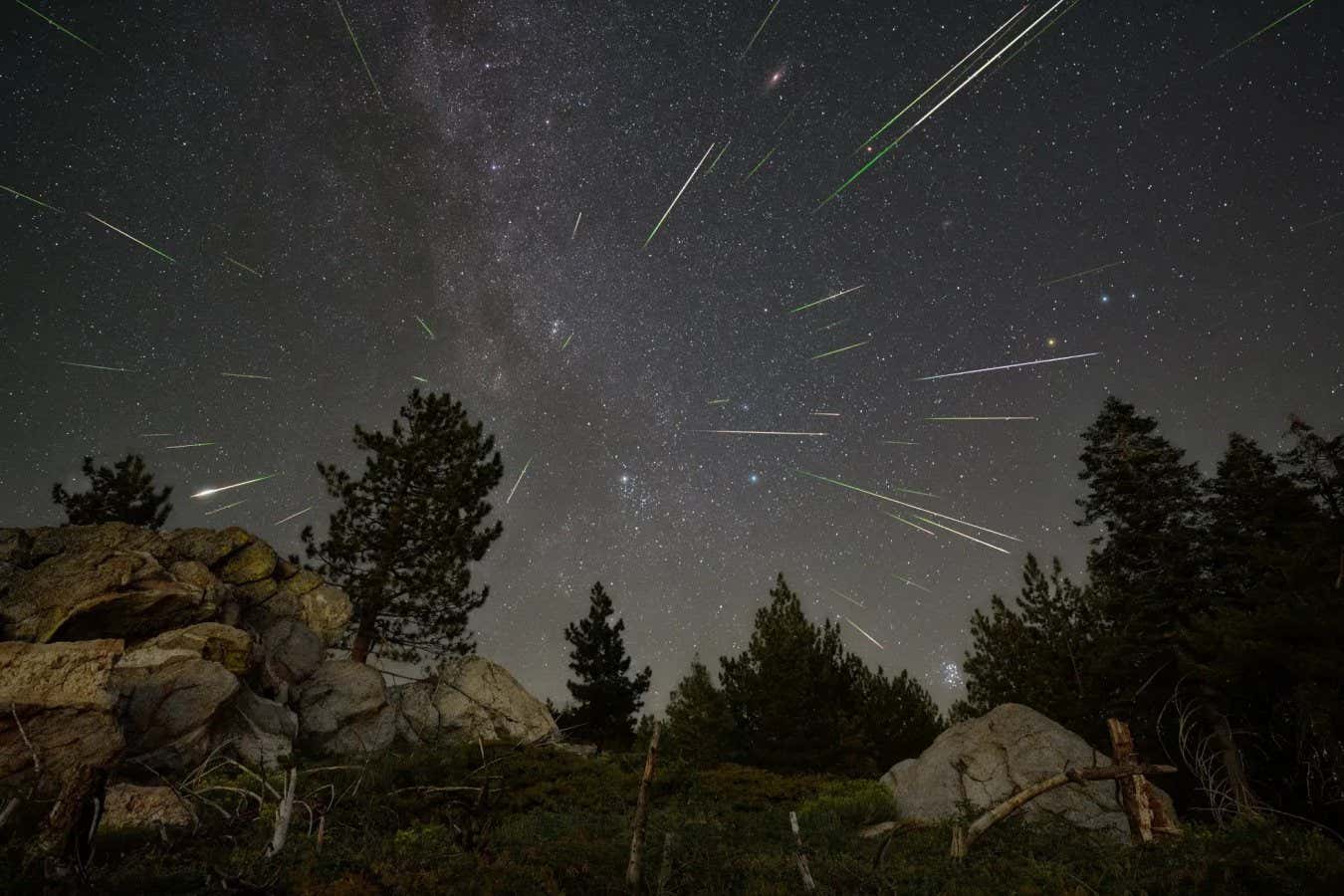The 2023 Perseid meteor shower observed from California.
Celestial debris may have transported essential life-sustaining elements to ancient Earth. While our planet is relatively deficient in certain elements vital for biological processes, the cosmic dust continuously descending from space contains a richer abundance of these elements, potentially accumulating in glacial regions during Earth’s formative years.
“This concept has lingered on the fringes of scientific discourse, but was previously disregarded for various reasons, primarily due to the perceived scarcity of these elements in any singular location,” stated a researcher from the University of Cambridge. Cosmic dust is known to be enriched in elements like phosphorus and sulfur, which are comparatively scarce on Earth, and it settles uniformly in a fine layer globally.
Traditionally, scientists investigating the origins of these crucial elements on Earth focused on larger celestial bodies capable of delivering substantial quantities at once. However, such sporadic delivery methods may not have been sustainable long enough for life to emerge, as noted by Walton. “Meteorites have long been viewed as a valuable source of these elements, yet their delivery is sporadic,” he explained. “It’s akin to receiving a lavish banquet once but never again, which is not conducive to sustaining a thriving existence. A continuous supply is imperative, and that’s precisely what cosmic dust provides.”
An estimated 40,000 tonnes of cosmic dust descend to Earth annually. In the distant past, this influx would have been significantly higher by a factor of 10 to 10,000, although still insufficient to significantly enrich any specific location with life-critical elements. Through simulations, Walton and his team explored how wind and water could have redistributed the dust, leading to its accumulation in concentrations conducive to fostering life.
Their research indicated that regions with glaciers were particularly promising for this process, given their ability to amass substantial amounts of dust while minimizing contamination from terrestrial debris. When cosmic dust lands on a glacier, it absorbs sunlight, causing it to melt and form small cavities in the ice. These cavities progressively accumulate more dust, eventually draining into ponds at the glacier’s periphery.
Although this phenomenon is observable today, the prevalence of glaciers billions of years ago would have facilitated a more efficient accumulation of dust. “To generate sediment that is highly enriched and facilitates the necessary reactions for life, this mechanism is highly advantageous,” Walton affirmed.
The existence of glaciers on early Earth remains uncertain due to limited data availability for that era. Nonetheless, researchers believe exploring all potential avenues, including those that could yield a rich primordial environment, is crucial. “Given the scarcity of data from that epoch, it’s challenging to ascertain the significance of cosmic dust in the genesis of life,” commented a scientist from Johns Hopkins University in Maryland. “However, any plausible scenario warrants investigation, especially if it offers a pathway to creating a fertile primordial soup.”
The paucity of information pertaining to this ancient period poses challenges in understanding the role cosmic dust played in the inception of life. “Deciphering the overall chemical composition of early Earth has always been a conundrum,” remarked a researcher from the University of South Florida. “Nonetheless, cosmic dust could represent a crucial reservoir of invaluable materials.”
